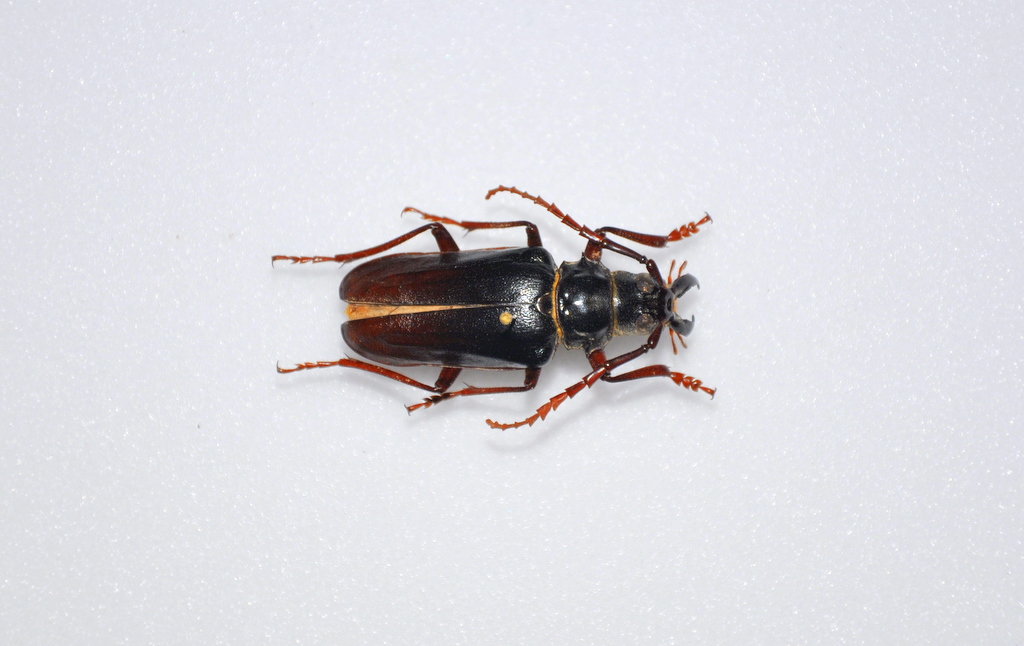| T O P I C R E V I E W |
| Pierre |
Posted - 17/01/2010 : 21:03:52

A small Dorysthenes spec. from China, San Su, Lanehou, 1800 m.
Could this be Dorysthenes (Baladeva) sternalis?
35 mm + mandibles
|
| 6 L A T E S T R E P L I E S (Newest First) |
| Capitaine |
Posted - 29/01/2016 : 11:25:11
Je trouve ce post ancien en faisant mon tri, il s'agit de Dorythenes (Cyrtognathus) paradoxus (Faldermann,1833) male.
Je posséde un ex. identique venant du même endroit (San Su / Lanchou 1800 m) |
| Pierre |
Posted - 22/01/2010 : 21:35:02
I will have to check this; thank you for Lameere's text.
I am surprised with hydropicus.
I have several "hydropicus" in my collection but, if this one is this species, the other ones must be completely wrong.
I think I will come back with these specimen and show them together in order to get out of an obviously confused situation. |
| Francesco |
Posted - 22/01/2010 : 19:04:26
The descriptions of the species of the genus Cyrtognathus are based on differential diagnoses that are difficult if both species are not under the eyes.
I attach their descriptions, which Lameere did in the monograph of 1911 (the whole paper about Dorysthenes can be read
here from page 325).

According to the provided characters, it seems that your specimen is a male of Dorysthenes (Cyrtognathus) hydropicus (Pascoe, 1857), while the one present in the gallery is more probably a male of Dorysthenes (Cyrtognathus) paradoxus (Faldermann, 1833), though erroneously identified.
The characters Gressitt provided (colour, interantennal space) are unhelpful, while the ones Lameere provided (elytral and pronotal shape) seem to me more significant. |
| Francesco |
Posted - 18/01/2010 : 18:57:46
It should be about a Cyrtognathus.
There are two species in China and one in the gallery here.
Gressitt's keys about Chinese fauna are (as usual) unclear and confused; I search for Lameeere's ones. |
| Pierre |
Posted - 18/01/2010 : 18:31:50
The sides of the pronotum have 3 spines, the first and third not very well developed but triangular; the one in the middle is stronger.
Underside: no prosternal process like in D. rostratus.
The intercoxal area is forwardly rounded here; but between the coxae, a large flattened process backwards to the mesosternum. |
| Francesco |
Posted - 18/01/2010 : 08:59:50
mmmhm... is the prosternum smooth or has it a strong anterior process like Dorysthenes (s. str.) has? |


